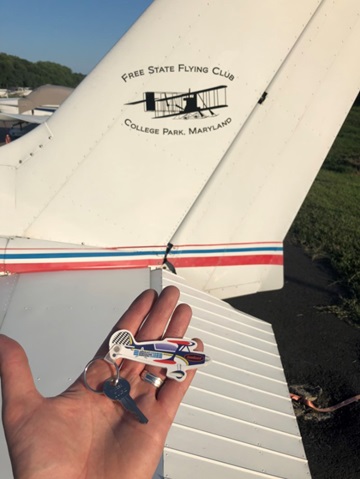 In a growing club, a key factor for continued safety is standardization for both in flight and ground operations. This standardization should start with a thorough checkout for any new club member. Plan to address two main components. First, a qualified pilot will need to assess the new member’s in-flight decision making and stick and rudder skills. Second, the new member will need to be introduced to any club policies relating to care and operation of the aircraft.
In a growing club, a key factor for continued safety is standardization for both in flight and ground operations. This standardization should start with a thorough checkout for any new club member. Plan to address two main components. First, a qualified pilot will need to assess the new member’s in-flight decision making and stick and rudder skills. Second, the new member will need to be introduced to any club policies relating to care and operation of the aircraft.
The goal of a checkout flight is for the pilot to demonstrate good decision making and safe, competent flying—not necessarily perfection. A checkout isn’t a checkride. Maneuvers covered during rental checkouts are typically up to a CFI’s discretion rather than a checklist. If the club would rather create a checklist, though, the ACS or PTS is a good place to start. Most checkouts cover, at a minimum, pattern work including go-arounds, and unique factors related to the local area, like practice areas and VFR reporting points.
Checkouts should also include air work like stalls and steep turns, decision making, and emergencies. Pulling the power back in the pattern and saying “you just had an engine failure” is not a realistic enough scenario to assess a pilot’s decision-making ability. Try to use something that’s more situationally based—it’ll give a better picture of this new pilot’s ability to think through a problem. The checkout is a great time to introduce a diversion or a complex simulated emergency. This is not a pass/fail event, but for a slightly rusty pilot it may take more than one flight to get up to club standards.
For the club policy part of the checkout, go over any operating practices that are specific to your club. Where and how should the airplane be parked and/or tied down? Are there rules about how to leave the hangar? Are there policies about refueling the airplane—a minimum or maximum amount of fuel needed in each tank? If the club has a complex or tailwheel airplane, are there currency rules beyond the FAA’s requirements? Give each new member access to a copy of club policies that they can reference after the checkout.
Club rules change. Talk about changing policies at club meetings, and encourage continued input from all members. Create an environment that is comfortable and understanding, so pilots can bring up concerns or discrepancies. A good culture of safety starts in day to day operations, and safe day to day operations are up to every member of the club. The club will attract more membership if it creates a reputation of safe, reliable pilots and aircraft.